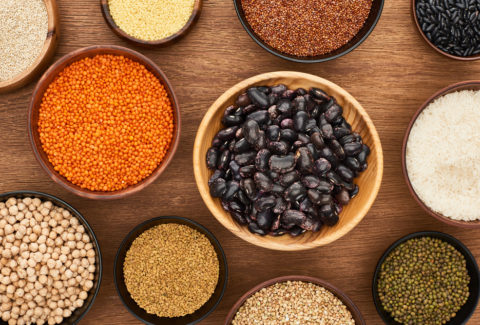Beyond Moderation: Navigating the Complexities of Highly Palatable Foods
Introduction:
In a world where temptations abound and indulgence is celebrated, the concept of moderation[1] has long been heralded as the key to managing the consumption of highly palatable foods. Yet, for many individuals, the allure of these tantalizing treats goes beyond simple moderation, presenting a complex and multifaceted challenge that extends far beyond the confines of portion control. In this article, we explore the complexities of navigating the seductive appeal of highly palatable foods and offer insights into a more nuanced approach to finding balance and wellness.
The Allure of Highly Palatable Foods:
Highly palatable foods, with their irresistible combination of sugar, fat, salt, and flavor enhancers, hold a unique power over our senses and our psyche. From decadent desserts to savory snacks, these foods tantalize our taste buds and trigger pleasure centers in the brain, leading to cravings, compulsive consumption, and overeating.[2] While moderation may seem like a logical solution, the reality is that the allure of these foods goes beyond simple portion control, often driven by emotional, psychological, and environmental factors.[3]
Understanding the Complexities:
At its core, the challenge of managing the consumption of highly palatable foods is rooted in a complex interplay of biological, psychological, and environmental factors. Emotional eating[4], stress, boredom, social influences, and food marketing all contribute to the allure of these foods, making moderation a challenging proposition for many individuals. Moreover, for some, the addictive qualities of highly palatable foods can further complicate efforts to resist temptation and exercise restraint.
Moving Beyond Moderation:
While moderation may be a helpful guideline for some, a more holistic approach is needed to navigate the complexities of managing the consumption of highly palatable foods. This approach involves:
- Mindful Eating: Practicing mindfulness around eating by tuning into hunger and fullness cues, savoring each bite, and being aware of emotional triggers or environmental cues that may prompt overeating.[5]
- Alternative Coping Strategies: Developing alternative coping strategies for managing stress, emotions, and cravings that don’t involve food. Engaging in activities such as exercise, relaxation techniques, or creative pursuits can provide healthier outlets for emotional regulation.[6]
- Environmental Modifications: Creating a supportive environment that promotes healthy eating habits by stocking the kitchen with nutritious options, limiting the availability of highly palatable foods, and reducing exposure to triggers that may prompt overconsumption.[7]
- Seeking Support: Seeking support from friends, family members, or healthcare professionals who can provide encouragement, accountability, and guidance on making healthier food choices and managing cravings.[8]
- Understanding Triggers: Exploring the underlying triggers or patterns that contribute to overconsumption of highly palatable foods, such as emotional eating or habit, and addressing these factors through therapy or self-reflection.[9]
Conclusion:
Navigating the allure of highly palatable foods requires a nuanced and multifaceted approach that goes beyond simple moderation. By embracing mindfulness, developing alternative coping strategies, modifying the environment, seeking support, and understanding triggers, individuals can cultivate a healthier relationship with food and promote overall well-being. While the journey may be challenging, it is ultimately empowering, offering the opportunity to reclaim control overeating habits and embrace a life of balance, satisfaction, and vitality.
[1] de Oliveira Otto, Marcia C., et al. “Everything in moderation-dietary diversity and quality, central obesity and risk of diabetes.” PLoS One 10.10 (2015): e0141341.
[2] Greenberg, Danielle, and John V. St Peter. “Sugars and sweet taste: addictive or rewarding?.” International journal of environmental research and public health 18.18 (2021): 9791.
[3] Van Strien, Tatjana. “Causes of emotional eating and matched treatment of obesity.” Current diabetes reports 18 (2018): 1-8.
[4] Frayn, Mallory, and Bärbel Knäuper. “Emotional eating and weight in adults: a review.” Current Psychology 37 (2018): 924-933.
[5] Monroe, Jessica T. “Mindful eating: principles and practice.” American Journal of Lifestyle Medicine 9.3 (2015): 217-220.
[6] Schultchen, Dana, et al. “Bidirectional relationship of stress and affect with physical activity and healthy eating.” British journal of health psychology 24.2 (2019): 315-333.
[7] Wolfson, Julia A., Cindy W. Leung, and Caroline R. Richardson. “More frequent cooking at home is associated with higher Healthy Eating Index-2015 score.” Public Health Nutrition 23.13 (2020): 2384-2394.
[8] Pedersen, Susanne, Alice Grønhøj, and John Thøgersen. “Following family or friends. Social norms in adolescent healthy eating.” Appetite 86 (2015): 54-60.
[9] Turton, Robert, et al. “Novel methods to help develop healthier eating habits for eating and weight disorders: A systematic review and meta-analysis.” Neuroscience & Biobehavioral Reviews 61 (2016): 132-155.









